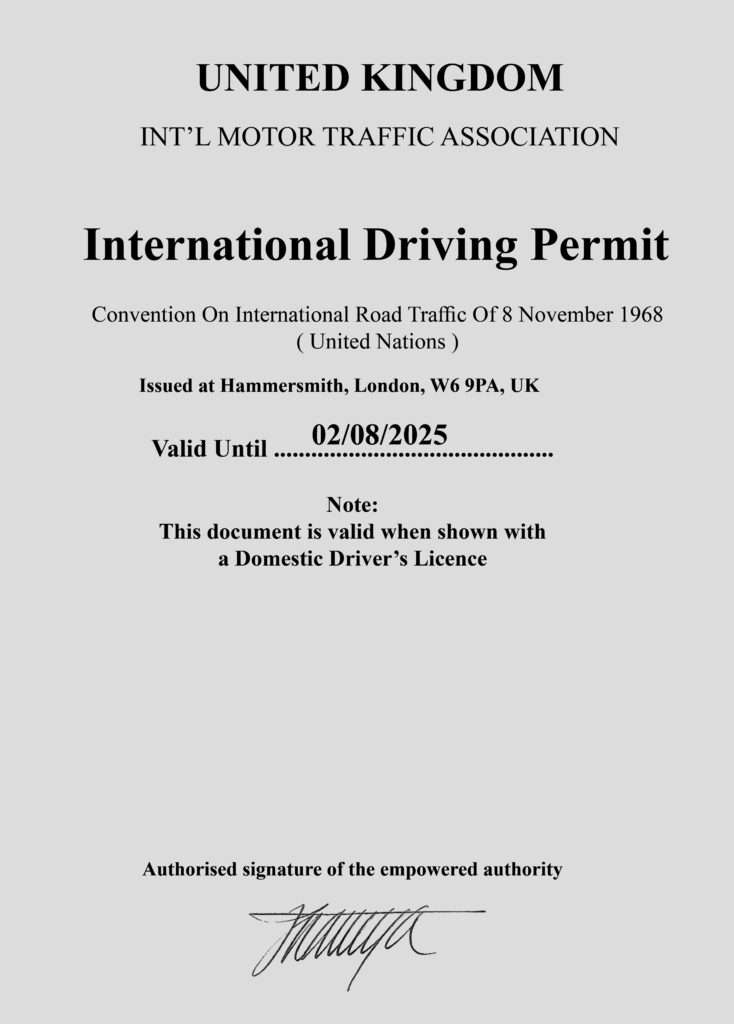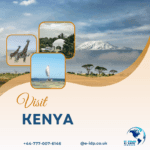Australia Travel Guide, IDP apply online Australia, International Driving Permit Australia, International Driving licence Australia, International Driving license Australia
Introduction to Australia
An International Driving Permit (IDP) allows Indian citizens to legally drive a motor vehicle in foreign countries that are signatories to the 1949 Geneva Convention. For Indian residents planning to travel abroad, whether for leisure, business, or relocation, having an IDP is often a mandatory document. This comprehensive guide will explain how to apply for an International Driving Permit in India, required documents, validity, fees, and more.
What is an International Driving Permit (IDP)?
An International Driving Permit is an official multilingual translation of your Indian driving license. It is not a standalone license but acts as a supporting document, proving that you hold a valid Indian driving license. It is accepted in over 150 countries, including the United States, United Kingdom, Australia, Germany, France, UAE, and many more.
Who Can Apply for an IDP in India?
To apply for an International Driving Permit in India, you must meet the following eligibility criteria:
-
All People can aaply worldwide.
-
Must have a valid driving license.
- You must be above 18 years of age.
Documents Required for International Driving Permit Application
Here is a detailed list of documents that must be submitted when applying for an IDP:
-
Valid Driving License.
-
Passport-Sized Photographs.
How to Apply for International Driving Permit in India (Step-by-Step Process)
Offline Application Procedure
-
Visit the RTO (Regional Transport Office) from where your license was issued.
-
Collect Form 4-A, Form 1, and Form 1-A from the RTO or download from the official Parivahan website.
-
Fill out the forms carefully and attach the necessary documents.
-
Submit the application along with the applicable IDP fee (generally ₹1,000).
-
Undergo a medical examination, if required.
-
Biometric verification and photograph may be taken at the RTO.
-
Once processed, the IDP is usually issued within 3 to 5 working days.
Online Application via Parivahan Sewa Portal
-
Visit the official Parivahan Sewa Portal.
-
Click on “Apply Now”.
-
Fill up all detailes required.
-
Upload scanned copies of all required documents.
-
Pay the required IDP fee via the online payment gateway.
International Driving Permit Fees in India
The official fee for IDP issuance in India varied according to years ans shiiping method. you will see the total fees after filling all the details required.
Validity of the International Driving Permit
An Indian-issued IDP is valid for one & Three years from the date of issue or until the expiry of your Indian driving license, whichever comes first. After expiry, you will need to reapply for a fresh IDP, which requires the same documents and procedures.
Renewal or Re-Issuance of IDP
Earlier, an IDP could only be issued in India. But as of recent government amendments, Indians living abroad can now also renew their IDP online through the Indian Embassies/Consulates in the foreign country.
The documents required for IDP renewal are:
-
Valid driving license.
-
Fees payable via gateway.
Renewed IDP is delivered to the applicant via speed post.
Countries That Accept the Indian International Driving Permit
Over 150 countries accept the Indian IDP, including but not limited to:
-
USA
-
UK
-
Germany
-
France
-
Australia
-
Canada
-
Italy
-
Netherlands
-
UAE
-
South Africa
-
Singapore
-
New Zealand
Always confirm with the destination country’s embassy or official transport department before travel to avoid any inconvenience.
Key Things to Remember Before Applying for IDP
-
IDP is not valid without a valid driving license.
-
IDP cannot be issued for heavy load vehicles.
-
Some countries require additional documentation – always check local laws.
-
It is advisable to apply at least 1-2 weeks before travel.
-
Carry both your IDP and original driving license when driving abroad.
FAQs – International Driving Permit India
Q1. Can I apply for an IDP without a passport?
Yes.
Q2. How long does it take to get the IDP?
Typically, it is issued within 3 to 5 working days, depending on the Syatem.
Q3. Is IDP mandatory for all countries?
Yes, some countries accept Indian licenses, but many require an IDP. Always verify before traveling.
Q4. Can I drive in the USA with an Indian IDP?
Yes, most US states accept the Indian IDP for up to one year.
How to obtain an international driving permit
The process of obtaining an international driving permit directly from an office can be quite challenging and time-consuming. The payment methods involved can also be complex. Therefore, it is recommended to consider applying for an international driving permit. The application process only takes around 10 to 15 minutes online, making it a more efficient option for getting your international driving permit. Get An IDP For Your Next Journey.
The necessary details required for the application of an International driving permit include:
– Full Name
– Email & Phone Number
– Current Address
– Place of Birth
– National Driver’s License Number
– National Driver’s License Issued Date & Expiry Date
– Picture of Driver’s License & Your Head Shot Photo for Your IDP
Conclusion
Applying for an International Driving Permit in India is a straightforward process that significantly enhances your mobility abroad. Whether you plan to rent a car, drive for work, or explore foreign roads, the IDP ensures you stay on the right side of the law internationally.
Always make sure your documents are in order, follow the application procedures accurately, and verify requirements with your destination country to enjoy a hassle-free
Australia, often referred to as the Land Down Under, is the sixth-largest country in the world by total area, renowned for its diverse geographical features and vibrant culture. A continent in its own right, Australia boasts a multitude of landscapes ranging from pristine beaches and lush rainforests to rugged mountains and expansive deserts. This vast array of natural beauty makes it a unique and captivating destination for travelers from around the globe. Australia Travel Guide, IDP apply online Australia, International Driving Permit Australia, International Driving licence Australia, International Driving license Australia
The Australian coastline stretches over 34,000 kilometers, offering some of the world’s most beautiful beaches, such as Bondi Beach in Sydney and the secluded bays of Byron Bay. Inland, the expansive Outback is a characteristically arid region, marked by iconic landmarks such as Uluru, a sacred site for the Aboriginal people. These contrasting environments not only provide countless recreational opportunities but also serve as a testament to Australia’s ecological diversity. Australia Travel Guide, IDP apply online Australia, International Driving Permit Australia, International Driving licence Australia, International Driving license Australia
Australia’s population is a rich tapestry of cultures, reflecting its history of immigration and its ancient Aboriginal heritage. Indigenous Australians have inhabited the continent for over 65,000 years, contributing to the cultural fabric through their traditions, languages, and spiritual connections to the land. Contemporary Australia is a multicultural society with influences from British colonial history and a wide array of immigrant communities, lending the nation a unique blend of culinary delights, festivals, and artistic expressions. Australia Travel Guide, IDP apply online Australia, International Driving Permit Australia, International Driving licence Australia, International Driving license Australia
As a travel destination, Australia is remarkable for its variety of experiences. Visitors can indulge in world-class wine regions, dive in the Great Barrier Reef, or explore vibrant cities like Melbourne and Sydney, each offering a distinct flavor of Australian life. With its appealing climate, unparalleled landscapes, and cultural richness, Australia remains a highly sought-after destination for many, promising a journey filled with discovery and adventure. Australia Travel Guide, IDP apply online Australia, International Driving Permit Australia, International Driving licence Australia, International Driving license Australia
Best Time to Visit Australia
Australia’s diverse climate presents a unique challenge for travelers seeking the best time to visit this vast continent. The country encompasses various climatic zones, from tropical in the north to temperate in the southern regions, which greatly influences the seasonal experiences available. Generally, the most favorable months to visit fall between December and February for southern Australia and June to August for the northern territories. However, peak travel times do vary based on specific locations and activities.
In the south, summer months (December to February) invite visitors to explore famous destinations like Sydney and Melbourne, where outdoor activities, including beach outings and cultural festivals, are abundant. Sydney’s iconic New Year’s Eve celebration is a highlight that attracts tourists from around the globe. Conversely, the sweltering heat can prove challenging for outdoor pursuits, particularly in the more inland areas where temperatures can soar. Thus, the shoulder seasons of spring (September to November) and autumn (March to May) are also popular for those who prefer milder weather and fewer crowds.
In northern Australia, particularly in regions such as Cairns and Darwin, the dry season from June to October draws visitors seeking sun and adventure. This period is marked by pleasant temperatures, making it ideal for exploring the Great Barrier Reef and experiencing outdoor festivities. On the other hand, the wet season from November to April brings heavy rainfall, resulting in lush landscapes but can hinder travel plans due to flooding and increased humidity. Travelers should particularly consider their intended activities when planning their visit, as specific festivals and events may align with these varying climates.
In conclusion, understanding Australia’s seasonal variations is crucial for travelers looking to maximize their experience in the Land Down Under. By aligning their plans with the local climate and major events, visitors can ensure they enjoy all that this diverse country has to offer. Australia Travel Guide, IDP apply online Australia, International Driving Permit Australia, International Driving licence Australia, International Driving license Australia
Must-See Destinations
Australia is a land of diverse landscapes and vibrant culture, offering a plethora of iconic destinations that captivate visitors from around the globe. One of the most recognizable cities is Sydney, famed for its stunning harbor, the Sydney Opera House, and the Sydney Harbour Bridge. Visitors can immerse themselves in the bustling lifestyle, enjoy city beaches like Bondi, and explore the historical precinct of The Rocks, where history blends seamlessly with contemporary attractions. Sydney serves as an excellent gateway to some of Australia’s natural wonders, such as the Blue Mountains.
Another must-see destination is Melbourne, known for its rich arts scene and multicultural vibe. The city boasts a plethora of galleries, theaters, and live music venues, reflecting its reputation as Australia’s cultural capital. The laneways of Melbourne are adorned with street art and offer an array of cafes and boutiques, making it a hotspot for food lovers and shopaholics alike. The nearby Yarra Valley provides opportunities for wine tasting tours, adding to the city’s allure.
The Great Barrier Reef, a UNESCO World Heritage Site, is an essential destination for those interested in marine life and underwater adventures. As the largest coral reef system in the world, it provides unparalleled opportunities for snorkeling and scuba diving, allowing visitors to explore its vibrant ecosystems. The reef should be appreciated not only for its beauty but also for its ecological significance.
Uluru, also known as Ayers Rock, represents a spiritual heart of Australia. This striking monolith is surrounded by rich Aboriginal culture and offers breathtaking sunrise and sunset views. Activities include guided walks, cultural tours, and the chance to learn about stories connected to this sacred site.
Lastly, the Daintree Rainforest stands as one of the oldest rainforests on Earth, housing unique flora and fauna. Visitors can experience guided walks, river cruises, and zip-lining adventures, all while absorbing the lush environment of this World Heritage site. Each of these destinations enriches the Australian travel experience, making them indispensable for any itinerary in the Land Down Under. Australia Travel Guide, IDP apply online Australia, International Driving Permit Australia, International Driving licence Australia, International Driving license Australia
Getting Around Australia
Australia, known for its sprawling landscapes and diverse environments, offers a variety of transportation options for travelers seeking to explore its wonders. Understanding the available modes of transport is essential for navigating the country effectively. This section will discuss domestic flights, trains, buses, and car rentals, highlighting their advantages and disadvantages.
Domestic flights are often the quickest means of traveling between major cities such as Sydney, Melbourne, and Brisbane. Australia’s geographic vastness makes air travel a convenient choice, allowing visitors to cover long distances in a matter of hours. Airlines frequently provide competitive pricing, especially if tickets are booked in advance. However, while flying can save time, it may not allow travelers to appreciate the stunning landscapes they pass over.
For those who prefer a slower pace, trains offer a scenic alternative. The country’s rail network connects many cities and regions, providing a comfortable means to experience Australia’s multifaceted geography. Notable services include the Indian Pacific, traversing from Sydney to Perth, and the Ghan, which runs between Adelaide and Darwin. Despite the scenic views, train travel can be time-consuming compared to flying.
Buses also serve as an economical means of transportation, with numerous companies operating intercity services. While bus fares are generally lower than those for flights or trains, travel times can be extensive, particularly for longer routes. Nevertheless, traveling by bus allows passengers to meet fellow travelers and enjoy unique roadside attractions that may be overlooked otherwise.
Finally, car rentals offer unparalleled freedom and flexibility. With a rental car, travelers can design their own itineraries, allowing for spontaneous detours to hidden gems away from the typical tourist paths. It is important, however, to consider factors such as fuel costs, parking availability, and adherence to local driving regulations.
Each mode of transport has its pros and cons, and the best choice often depends on individual preferences and travel plans. Understanding these options will undoubtedly enhance your experience as you journey through the diverse landscapes of Australia. Australia Travel Guide, IDP apply online Australia, International Driving Permit Australia, International Driving licence Australia, International Driving license Australia
Accommodation Options
When traveling through Australia, visitors will find a diverse range of accommodation options catering to various budgets and preferences. From budget hostels to luxurious resorts, the choices are extensive, ensuring every traveler can find a suitable place to stay. Budget-conscious travelers often opt for hostels or motels, which can be found in most urban areas and tourist hotspots. These establishments typically offer shared facilities, helping guests save on costs while also providing opportunities to meet fellow travelers.
For those seeking a more traditional experience, hotels are widely available across the country, ranging from mid-range to five-star establishments. Cities like Sydney and Melbourne are home to reputable hotel chains and boutique offerings, showcasing the unique culture and hospitality of Australia. It’s advisable to book in advance, especially during peak travel seasons when accommodation can fill up quickly.
In addition to conventional lodging, Australia is renowned for its unique stays, such as eco-lodges and glamping experiences. These accommodations allow guests to immerse themselves in the stunning natural landscapes, promoting sustainability while offering a comfortable getaway. Locations such as Tasmania and the Great Barrier Reef have excellent eco-friendly options that enhance the travel experience while minimizing environmental impact.
For those planning to travel beyond urban centers, there are charming guesthouses and bed-and-breakfasts in rural areas. These lodgings often provide a personal touch, with hosts eager to share local knowledge and culture. It’s important to consider the location when booking accommodations, as major regions such as the Gold Coast or Byron Bay may offer beachside resorts, while the Outback can provide unique cabins or ranch stays.
In conclusion, Australia offers a plethora of accommodation options ranging from economical to extravagant, ensuring all travelers can find the perfect place to rest during their journey. Comprehensive research and early planning can enhance the experience, paving the way for memorable adventures across this beautiful country. Australia Travel Guide, IDP apply online Australia, International Driving Permit Australia, International Driving licence Australia, International Driving license Australia
Culinary Delights: Food and Drinks in Australia
Australia’s culinary landscape is as diverse as its population, reflecting a rich tapestry of cultural influences and local produce. With a unique blend of traditional ingredients and contemporary flair, Australian cuisine offers a delightful exploration for food enthusiasts. The country’s natural bounty, including fresh seafood, lush grains, and vibrant fruits and vegetables, is integral to the dishes served across the nation.
Some quintessential Australian dishes stand out, showcasing both indigenous ingredients and modern interpretations. The iconic meat pie, often enjoyed with a rich gravy, is a staple at sporting events and casual gatherings. Another beloved dish is the pavlova, a light meringue dessert topped with fresh seasonal fruits, celebrated for its crisp crust and soft inside. Australian barbecues are a popular social activity, showcasing grilled delicacies such as lamb chops and kangaroo steaks, allowing diners to savor the distinct flavors of Australian meats.
Australia is also renowned for its wine regions, which contribute significantly to its culinary scene. The Barossa Valley, located in South Australia, is famed for its Shiraz wines, while the Margaret River region in Western Australia is celebrated for its exceptional Cabernet Sauvignon and Chardonnay. Wine tours in these regions offer visitors the opportunity to taste renowned wines and enjoy gourmet dining experiences paired with stunning landscapes.
When exploring local eateries, visitors can find a variety of options ranging from high-end restaurants to casual cafés. Many establishments prioritize sourcing ingredients from local farmers and artisans, reflecting a commitment to sustainability. Food markets, such as the Queen Victoria Market in Melbourne, provide an authentic experience with fresh produce, artisanal goods, and a chance to sample street food. As travelers embark on their culinary journey in Australia, they will discover a landscape filled with flavors, textures, and influences that truly capture the essence of the Land Down Under.
Outdoor Activities and Adventures
Australia is renowned for its breathtaking landscapes and diverse ecosystems, making it a prime destination for outdoor activities and adventures. From the idyllic beaches along the coast to the rugged Outback, there is an abundance of options for those seeking to immerse themselves in nature. Surfing is among the most popular activities, with world-class surf breaks found at iconic locations such as Bondi Beach and the Gold Coast. Here, both beginners and seasoned surfers can ride the waves while enjoying the stunning scenery.
Hiking enthusiasts will find Australia to be a treasure trove of trails that cater to all skill levels. The Great Ocean Walk in Victoria showcases awe-inspiring coastal views and unique wildlife, while the Larapinta Trail in the Northern Territory offers a more rugged, yet equally rewarding, trekking experience through dramatic landscapes. National parks such as Kakadu and Blue Mountains also provide numerous hiking opportunities, allowing visitors to appreciate Australia’s rich flora and fauna.
Diving and snorkeling are exceptional ways to experience the underwater wonders of Australia. The Great Barrier Reef, a UNESCO World Heritage site, stands out as one of the most spectacular diving locations in the world. Here, divers can explore vibrant coral reefs and encounter a variety of marine life. For those seeking encounters with terrestrial wildlife, destinations like Kangaroo Island offer opportunities to see native species such as kangaroos, koalas, and sea lions in their natural habitats.
Moreover, adventurers should not miss the chance to engage in other outdoor activities such as rock climbing in the Grampians or white-water rafting in Tasmania. These thrilling experiences capture the essence of Australia’s unspoiled wilderness. Overall, whether surfing the waves or trekking through mountains, Australia’s outdoor offerings promise unforgettable adventures for travelers of all interests and ages.
Culture and Local Etiquette
Australia boasts a diverse cultural landscape shaped by its rich history and the myriad of influences that have contributed to its contemporary society. At the heart of this cultural tapestry is the Indigenous population, whose heritage spans thousands of years. Aboriginal and Torres Strait Islander cultures have significantly impacted Australian identity through art, music, dance, and storytelling. Visitors should take the time to appreciate Indigenous art galleries and cultural centers, which often celebrate their history and spiritual connections to the land.
In addition to Indigenous culture, Australia is home to a multitude of festivals that reflect its multicultural society. Celebrations such as the Sydney Festival, the Melbourne International Comedy Festival, and various food and wine festivals throughout the year showcase the country’s artistic talents and culinary achievements. Engaging in these events allows travelers to gain insight into the Australian way of life and the creative spirit prevalent in various communities.
Understanding social etiquette is crucial for newcomers looking to navigate this vibrant culture smoothly. Australians are known for their laid-back nature, yet they also adhere to key social norms. Greeting people with a friendly “G’day” is customary, reflecting the informal nature of social interactions. It is important to engage in conversations that are respectful and may often involve humor, as Australians appreciate wit and sincerity.
While enjoying local customs, there are certain dos and don’ts to observe. It is advisable to avoid controversial topics such as politics and religion during initial encounters. Moreover, public displays of affection are generally accepted, while excessive loudness in quiet settings may be frowned upon. Awareness of these cultural nuances will significantly enhance your travel experience and foster respectful interactions with locals. Australia Travel Guide, IDP apply online Australia, International Driving Permit Australia, International Driving licence Australia, International Driving license Australia
Safety and Travel Tips
Ensuring a safe and enjoyable experience while traveling in Australia requires preparation and mindfulness. One of the primary considerations is health precautions. Travelers should be aware of the climate and understand how to protect themselves from sun exposure, particularly when engaging in outdoor activities. It is recommended to use broad-spectrum sunscreen with a high SPF, wear protective clothing, and seek shade during peak sun hours. Staying hydrated is also crucial, particularly in hotter regions such as the Outback.
In case of medical emergencies, it is vital to know how to access healthcare services. Visitors to Australia should ensure they have appropriate travel insurance that covers health-related costs. The emergency telephone number for police, fire, and ambulance services is 000 across the country. Additionally, major cities like Sydney and Melbourne have well-equipped hospitals and clinics that can attend to a variety of health issues.
While Australia is known for its breathtaking landscapes, it is also home to unique wildlife. Encountering animals such as kangaroos, snakes, and spiders is common, and it is essential to respect their space. Travelers should observe wildlife from a safe distance and avoid feeding animals, which can lead to dangerous encounters. Familiarity with basic safety measures in wilderness areas, including the potential for hostile attaks from certain animals, is important for enjoying the outdoors responsibly.
Australia is also prone to various natural elements, such as bushfires and flooding, depending on the season and geographical location. Stay updated on weather warnings and local advisories, especially when venturing into remote areas. Planning your itinerary and adhering to safety guidelines can prevent risks associated with natural disasters.
By following these essential safety tips and being proactive about health considerations, travelers can fully enjoy the unique experiences that Australia has to offer while minimizing potential risks.
What you need to rent a car, and how to rent one
As a tourist, you’ll most likely be renting a car (more on that in a bit) for your road trip. Even so, there are certain requirements that you’ll have to check off before you get into it.
- You have to get an International Driver’s Permit. Apply for it online or head to the office — we prefer doing it in person because the queue is pretty short during off-peak hours, and you can get it done on the same day. It’ll cost S$20 and is valid for one year from the date of issue.
- A valid local driver’s license. international driving licence online
- You have to be at least 21 years of age and have held your local licence for a year. A surcharge may be imposed for drivers under the age of 25.
- A passport for identification .
- A credit card in the driver’s name.
How to obtain an international driving permit
The process of obtaining an international driving license directly from an office can be quite challenging and time-consuming. The payment methods involved can also be complex. Therefore, it is recommended to consider applying for an international driving license from IMTA. The application process only takes around 10 to 15 minutes, making it a more efficient option for getting your international driving permit Get Your Online Int’l Driving Permit for the United Kingdom
Your Online Int’l Driving Permit for the United Kingdom
The necessary details required for the application of an International driving permit include:
– Full Name
– Email & Phone Number
– Current Address
– Place of Birth
– National Driver’s License Number
– National Driver’s License Issued Date & Expiry Date
– Picture of Driver’s License & Your Head Shot Photo for Your IDP





